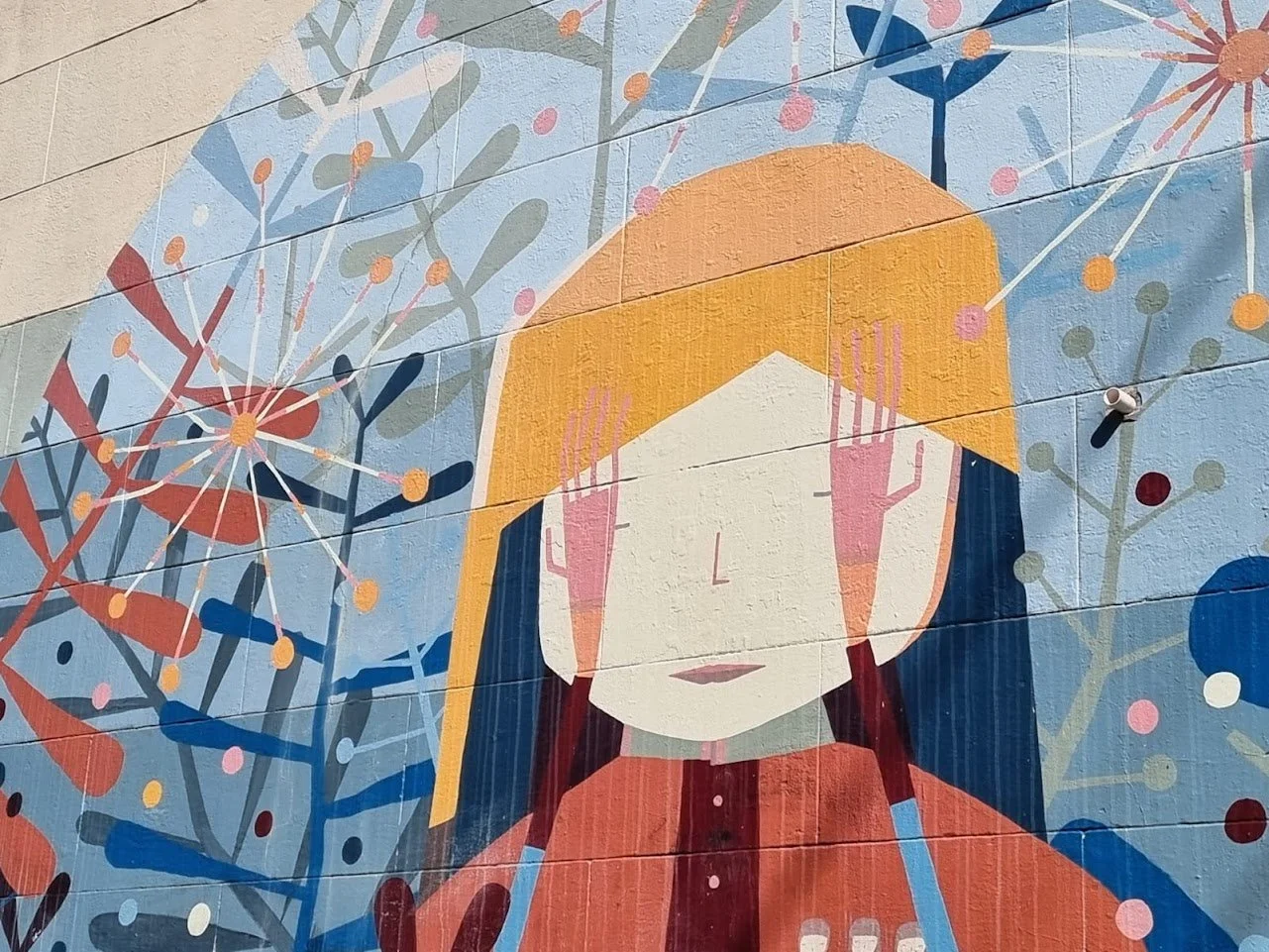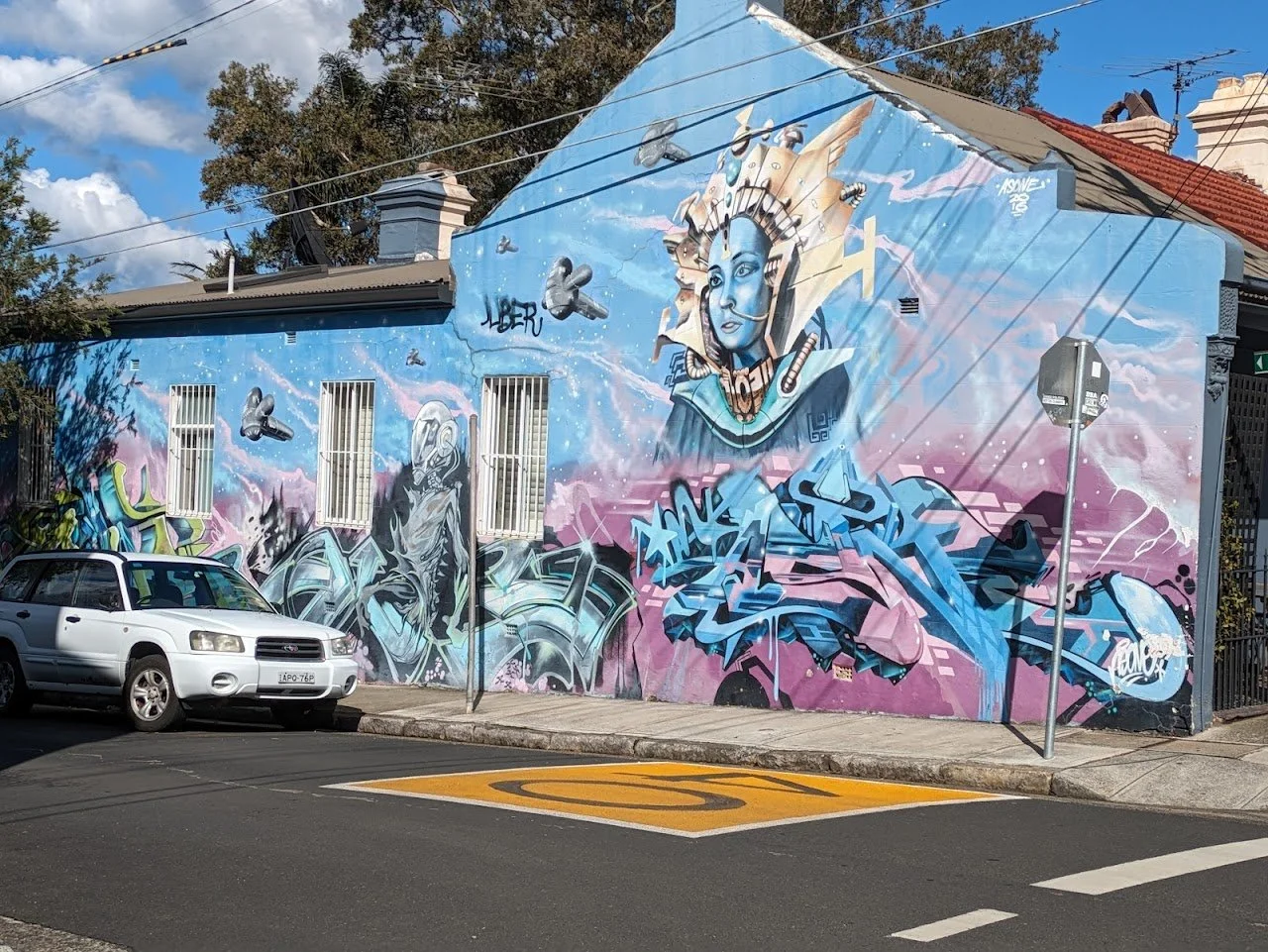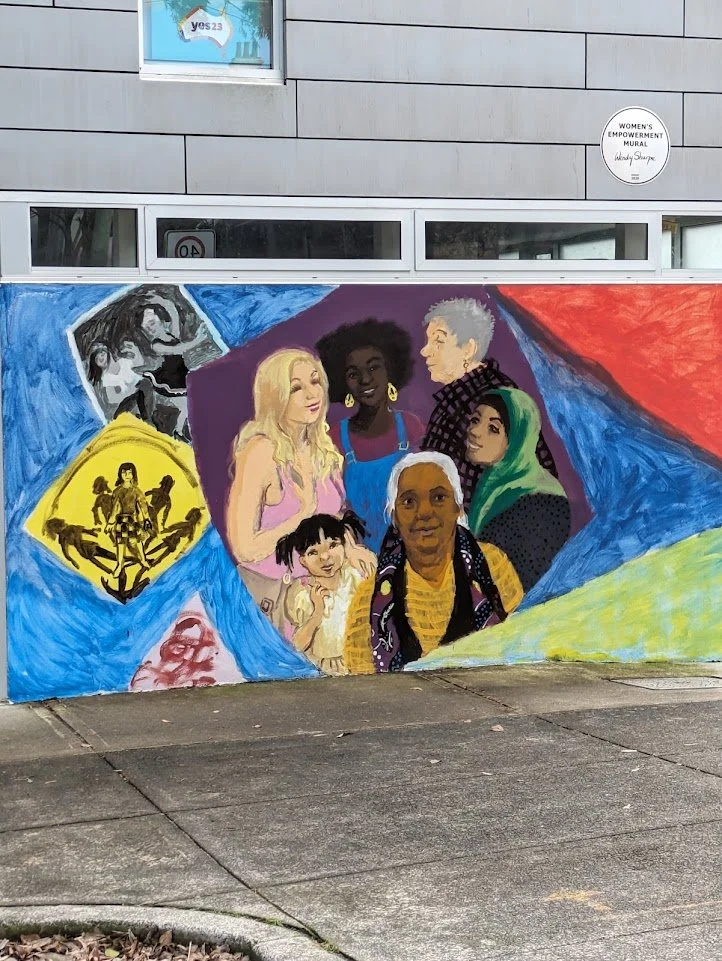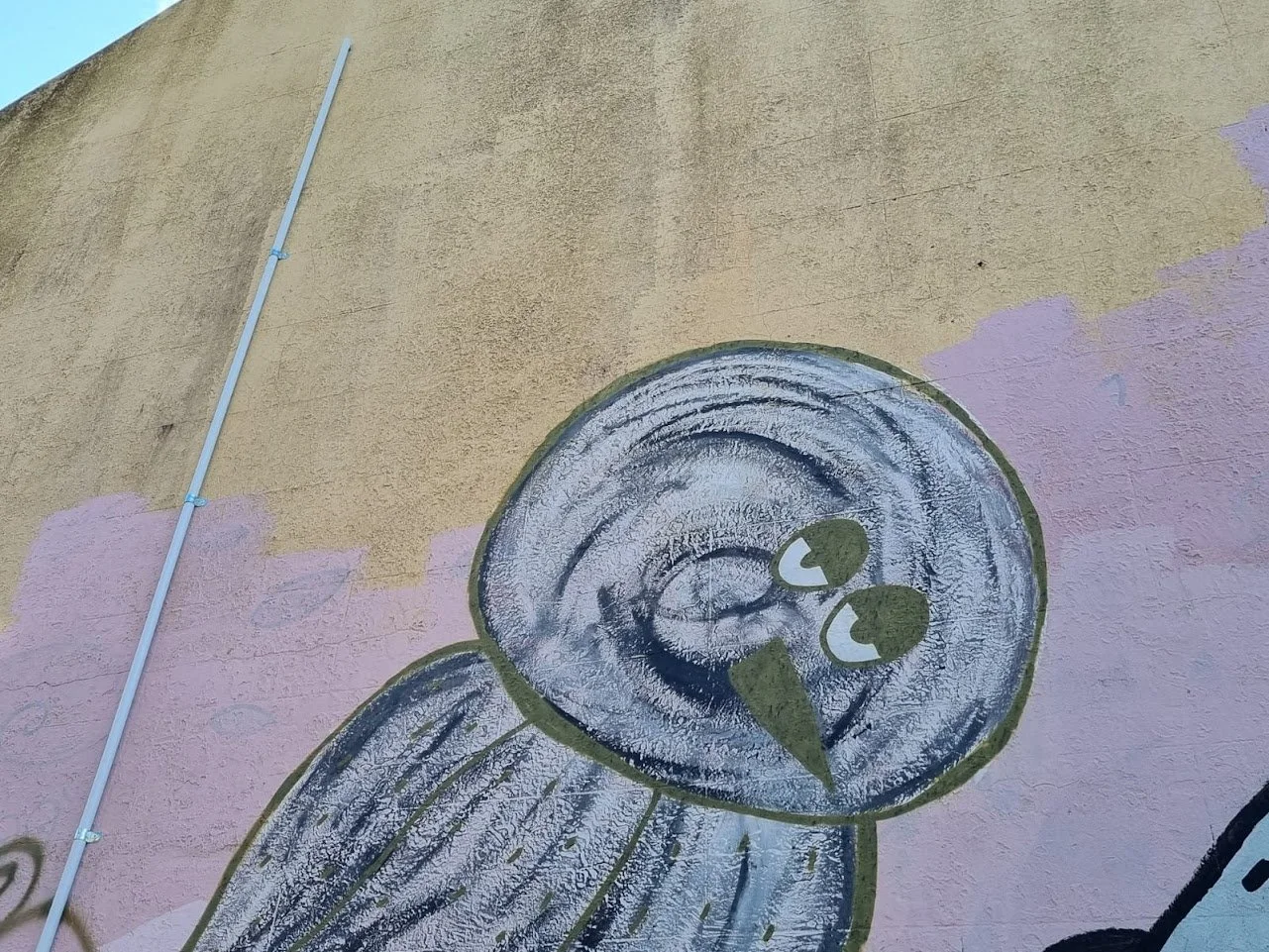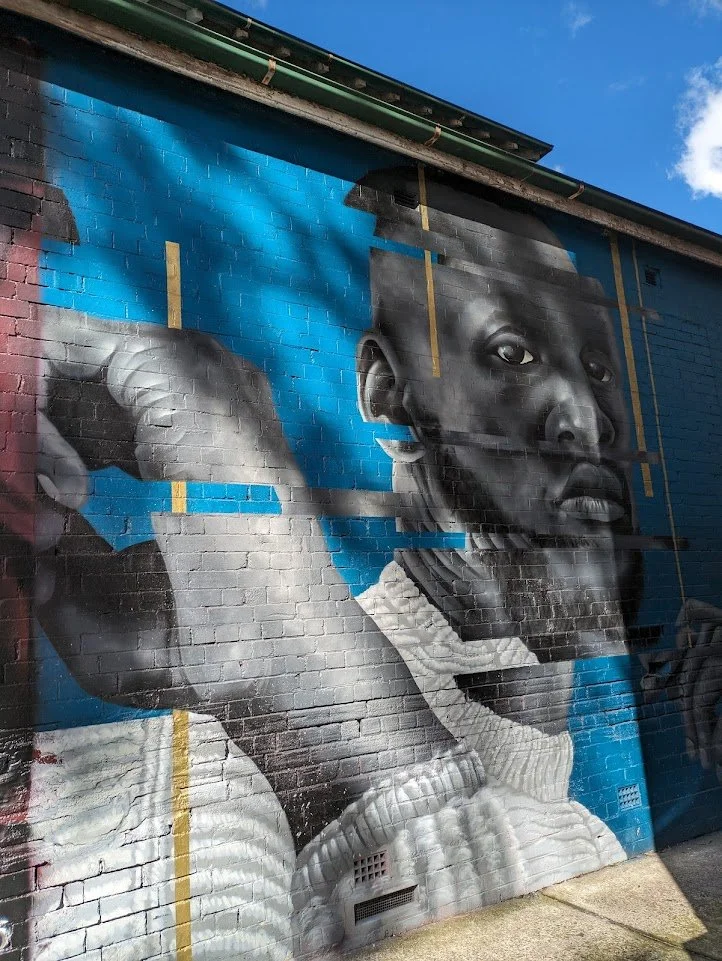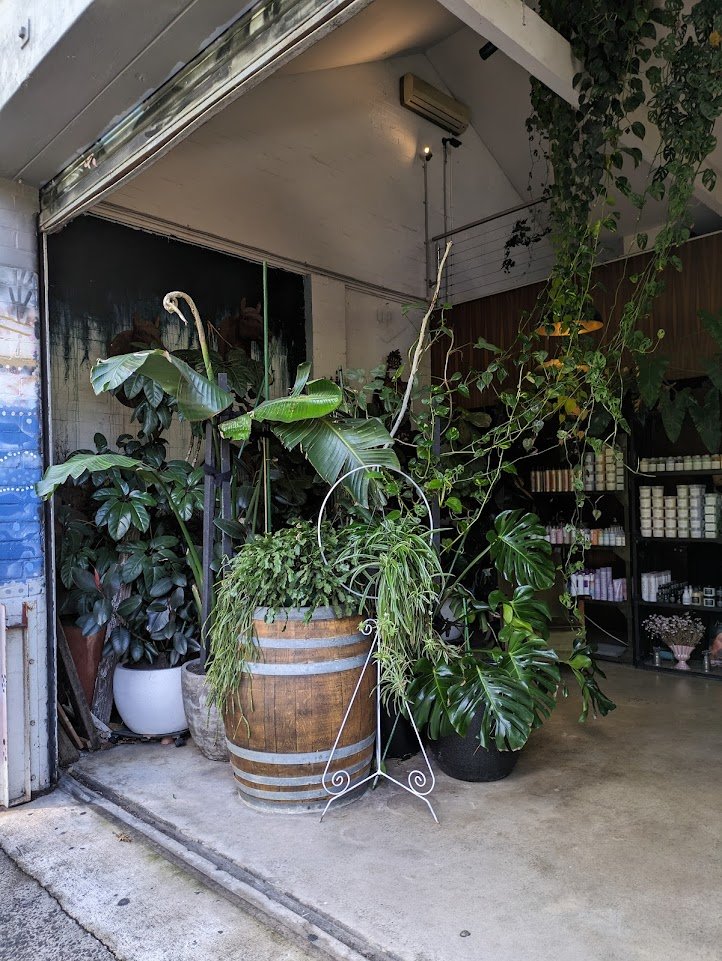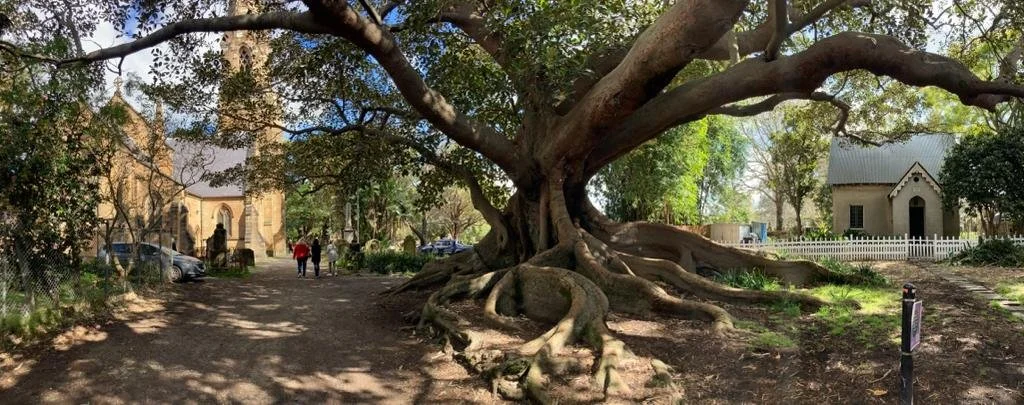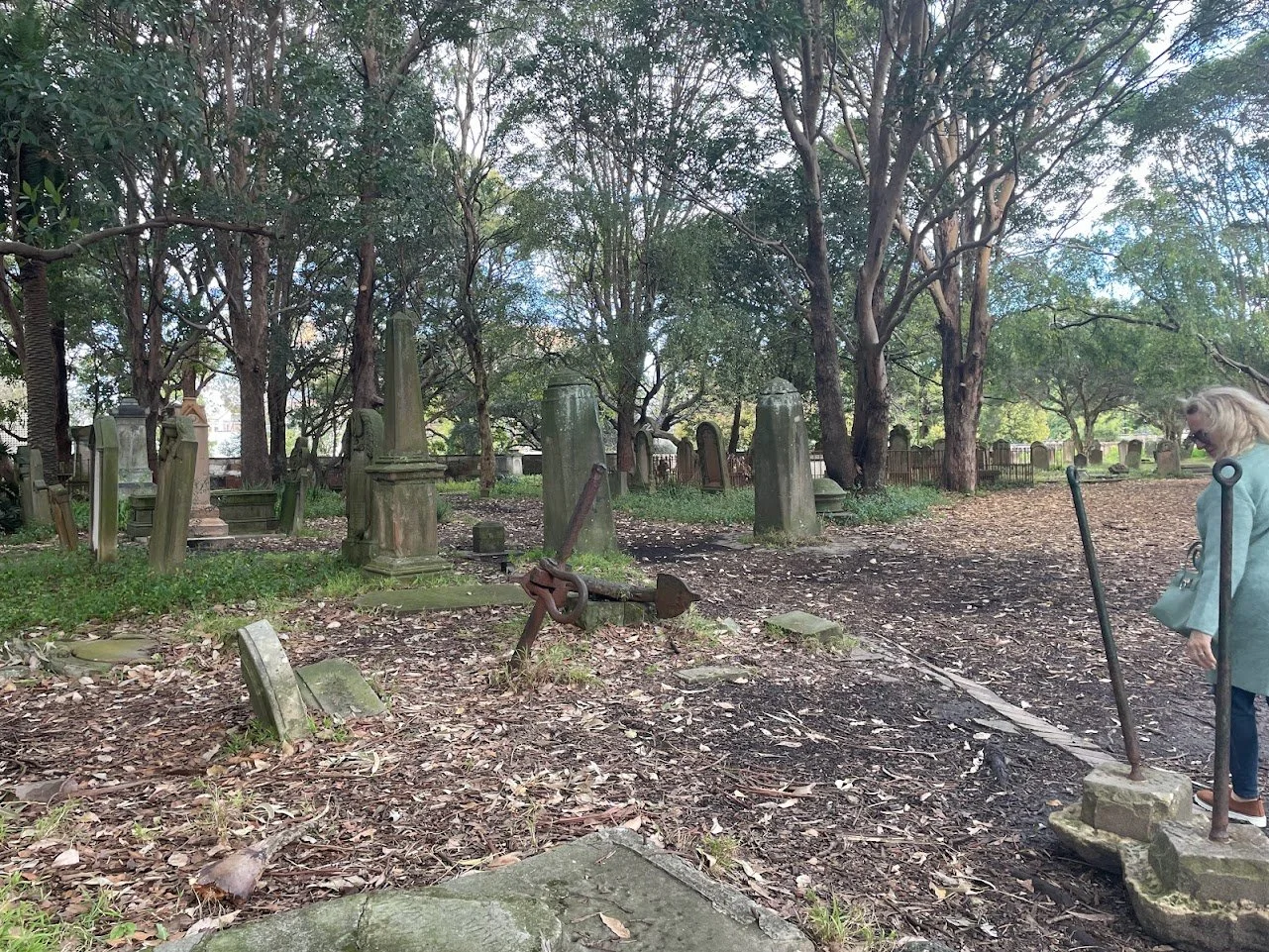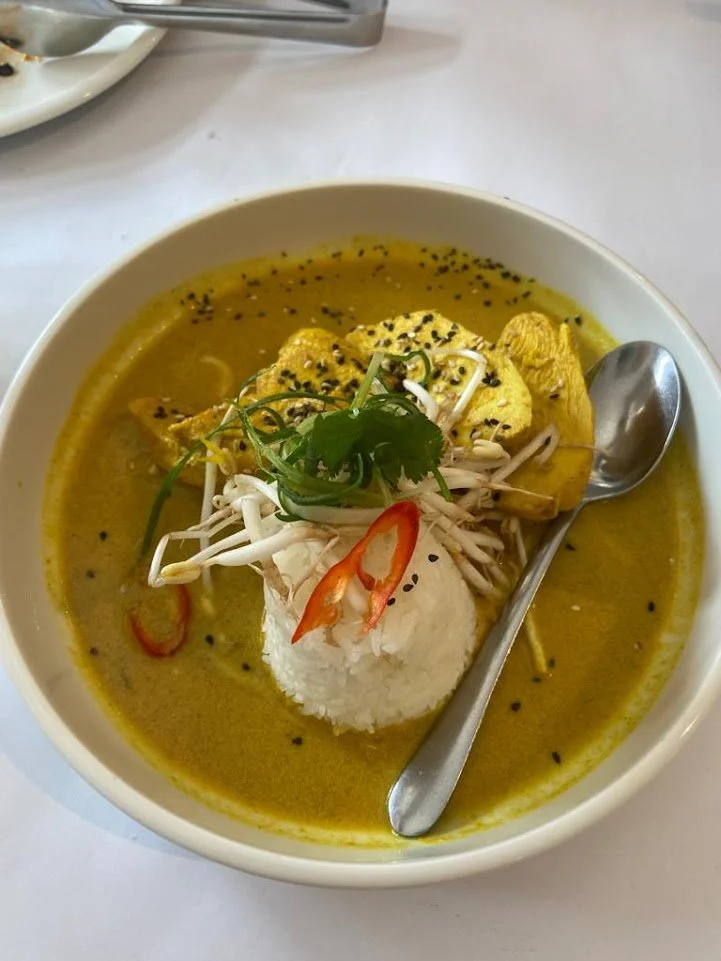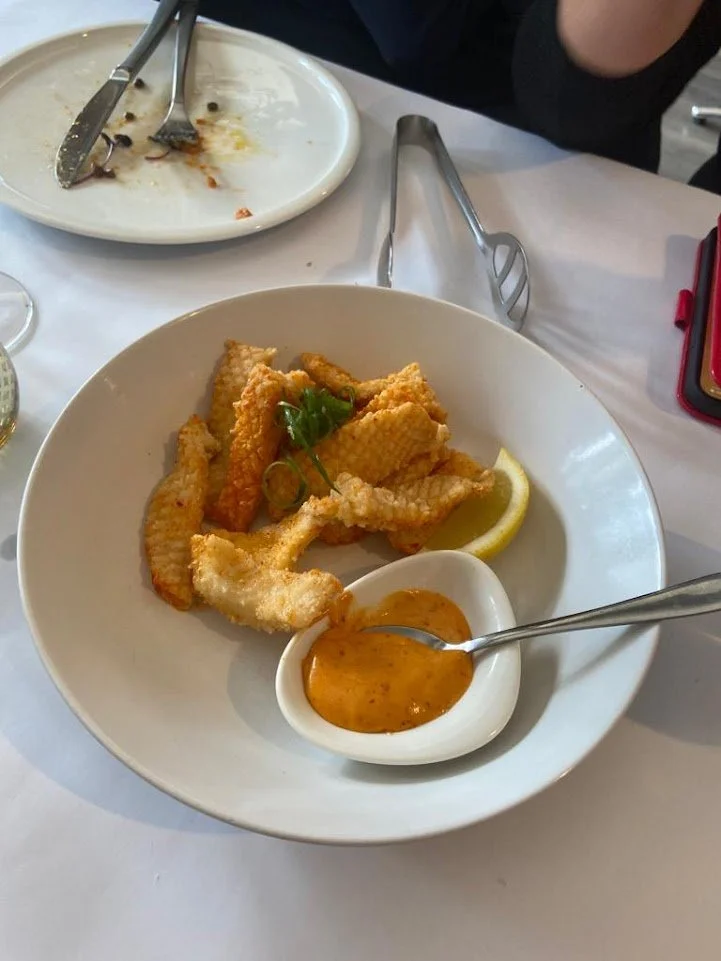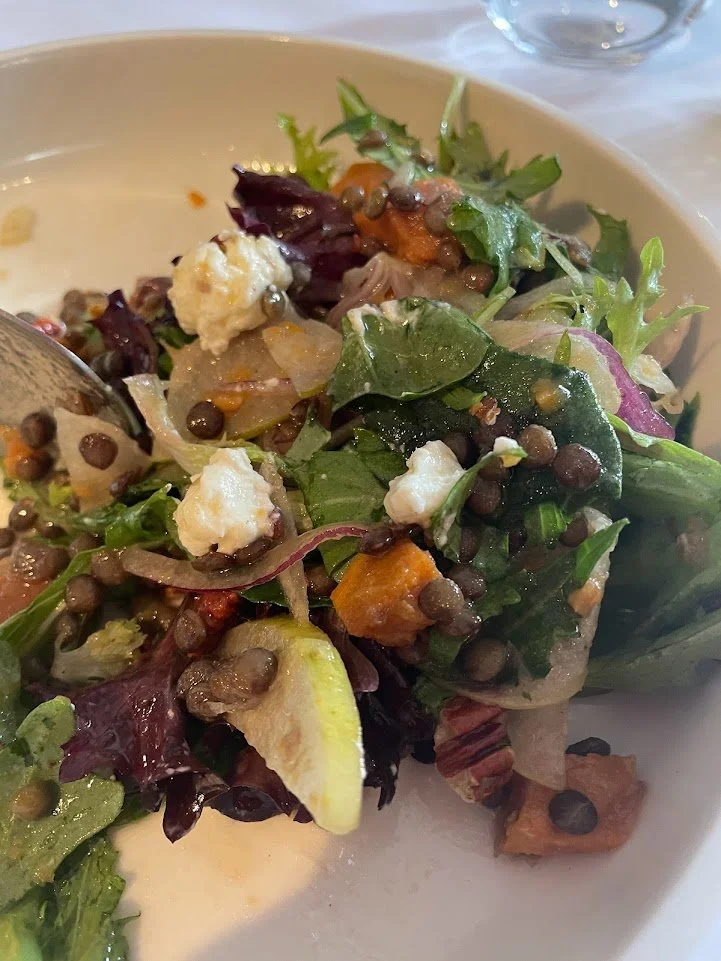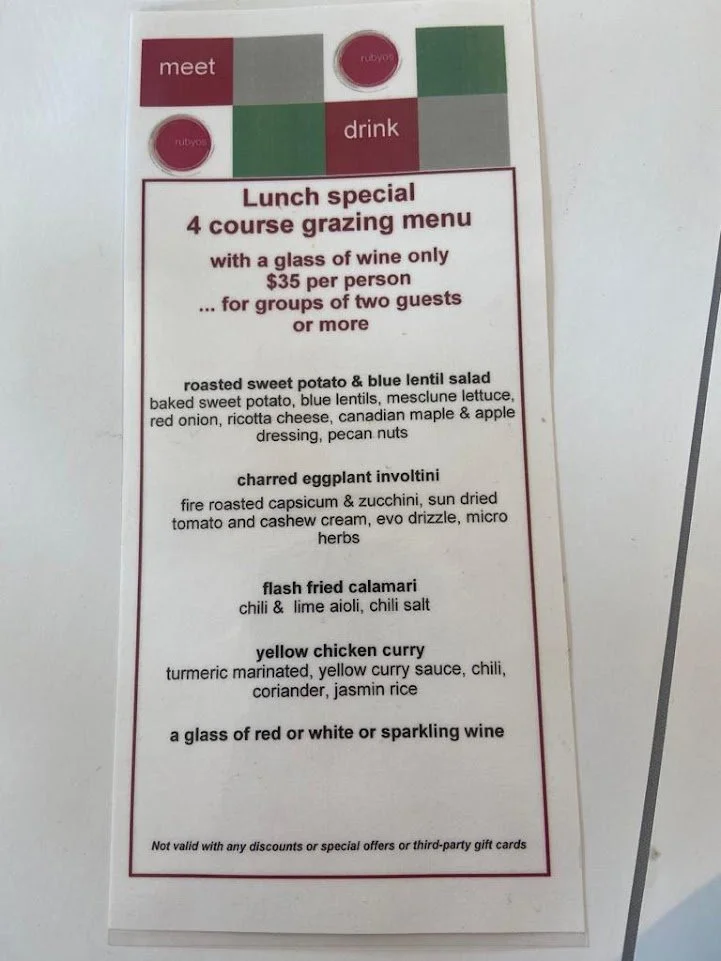Newtown
Background
Originally inhabited by the Gadigal people, Newtown is believed to follow a First Nations track that branched out from the main western track at Parramatta Rd and Broadway through to Botany Bay. It follows the spine of a long ridge that, in early colonisation, would have provided a view down towards the city.
Established as a residential and farming area in the early 19th century, it was named for John & Eliza Webster’s New Town store which traded on King St, now the Webster Bar, complete with rooftop. The land lying south of King St was granted to Nicholas Devine, the Superintendent of Convicts, in 1794 and 1799 (and Erskineville, Macdonaldtown and Golden Grove). In 1827, when he was about 90, the land was sold to many of Sydney’s wealthiest and most influential inhabitants and divided into housing.
We met at Cafe Newtown and crossed to Newtown Plaza to view the Newtown Town Hall and The Hub. The Hub originally opened as the Clays Bridge Theatre in 1910 with vaudeville. It was converted into a cinema, then back to a theatre and in the 1970s became an adult porn venue, both live acts and movies. It then became the home to The Shakespeare Players until 2002. Now empty with talk of transformation.
The Town Hall operated from 1861 to 1948 and is now used by community groups.
Up the road to the Black Star pastry, home of the famous strawberry watermelon cake ‘the most instagrammed cake in the world’ of which over one million slices a year are served. The first store was in Newtown, at a different location, established in 2008. It was originally owned by Christopher The, a Haberfield boy, and is now owned by the Jackalope Group.
On to the most famous mural, ‘I have a dream’ which was created over a weekend in August 1991 by Juilee Pryor and Andrew Aitken (who served time in gaol in the UK for murder and now lives in Canada) . They had twice asked for permission to paint the mural, were refused and decided to do it anyway. Borrowing a friend’s cherry picker (interesting friends!) they hid in plain sight, starting at 7pm Friday and continuing the next night. Ms Pryor described the experience as "wonderful". She said the mural was her "gift" to the Newtown community. "It was a gesture made by two people in dire circumstances," she said. Ms Pryor encouraged others to leave their own legacy. "Don't be frightened to fail. If you're not prepared to fail, you're not prepared to succeed."
The mural reflects three themes: gender equality, environmental activism and civil rights, its purpose was to promote tolerance and equality. It has now been heritage listed to ensure its legacy.
We continued the mural theme at 112, 84 and 38 Lennox St and into Church St and Mary St. In 2014 a Marrickville Council initiative established an annual Perfect Match Street Art program as an initiative to tackle unwanted tagging and graffiti. Its purpose now is to mentor emerging artists, foster legitimate creative expression and create site specific large scale paintings in public spaces. There are over 150 murals throughout the inner west.
We meandered over to Mary’s in Mary St, an American style burger venue established in 2013. Owners Jake Smyth and Kenny Graham wanted to create a venue they’d like hanging out in; leading to a loud, dark venue playing metal, pouring local beers and serving fried chicken and cheeseburgers styled on America’s popular fast food chains.
The duo got hold of the 100-year-old building and gutted it. They retained the original floorboards, added a mezzanine level and built tables using old railway sleepers. Homemade Jack Daniel’s light fittings and a timber feature wall add plenty of character. The building was originally a brothel, hence the red light out the front.
The short menu is styled on American fast food, but it’s far from it in production. The buns are soft and the cheese is American. But the all-important patties use some of the best beef in Australia – O’Connor grass-fed; and the trashcan bacon is smoked on-site in a (spotless) garbage can.
We lingered outside The Loft Story, which, with a quick glance looked like a great nursery! A Hair Salon by day into night and on Sundays and Mondays their converted warehouse hosts amazing events like edible terrarium workshops and intimate jazz nights.
Is there another suburb that has street art in its IGA carpark? This courtyard of art was part of the 2016, 2019 and 2020 Perfect Match cohort. Promise, by Steven Nutall aka Ox King (a Sydney based, UK born painter and illustrator) references the Charles Dickens novel Great Expectations. The main character Miss Havisham may have been based on a local woman, Eliza Emily Donnithorne, (1821-1886) who was jilted on the day of her wedding and became a recluse and wore her wedding dress until the day she died. She was social elite, her wedding was to be a gala occasion with the banquet laid out. Onlookers, coaches and guests assembled to escort her to St Stephens church. The groom never arrived and Eliza retreated to isolation insisting that her house remain ready for his arrival. The door remained ajar with a chain and Eliza could be seen awaiting her fiancée’s arrival. The table was never cleared and she remained in her wedding dress for the next 30 years until she died in 1886. She lived in Camperdown Lodge, then known as Cambridge Hall, on the corner of King & Georgina Streets. Whether or not Eliza Emily Donnithorne's story provided the inspiration for Dickens has been the subject of speculation and research. It is possible that Mary Reibey or Caroline Chisholm with whom Dickens communicated, may have told him the story. Her father, Judge Donnithorne, a retired East India official was supposed to be a friend of Dickens. However, a similar case in England has also been proposed as a source.
Womens’ Honour, painted by Brad Robson, depicts notable women from the area and celebrates empowerment, equality, social justice and inclusion. The women (left to right) are:
Uppma Verdi, CEO and founder of Chai Walli, with the mission of introducing to Australia authentic Indian and Ayurvedic teas
Barbara Ramjan, a significant volunteer with Rowing NSW. Probably more famous when she was falsely accused of lying about Tony Abbott punching the wall either side of her head when he lost a student election. News Corp, Andrew Bolt, Michael Kroger and Alan Jones later apologised to her.
Betty Spears, recognised for her efforts in the areas of equal pay and family working rights and establishing a long day care centre in Tempe
Rosemary Hegner, recognised for her outstanding career with NSW Ambulance, which commenced with her proving she could lift a heavy man onto a stretcher and into the ambulance in a ‘men only’ world.
Our next stop was St Stephens Church and Cemetery, designed by Edmund Blacket. The church is considered to be one of Australia’s best Gothic Revival churches. In 1848, a group of influential Church of England businessmen purchased 12½ acres of Camperdown land (which had originally been granted to William Bligh upon his appointment as fourth governor of NSW), and established Camperdown Cemetery as the Church of England’s principal burial ground in Sydney, accepting the dead of all denominations and burying them with the rites of the Church of England. They laid out the ground in the popular plantation design which included a central circular path, divided the area into 56 sections of each 100 feet square, erected a 6 foot high paling fence to enclose the area, built the sexton’s cottage. planted the fig tree at the entrance to the cemetery and organised for the first grave to be put in place: the grave of Sir Maurice O’Connell, Bligh’s son-in-law, who had inherited and sold the land but had died a few months before. O’Connell’s grave was brought from the Old Devonshire Cemetery and placed in Camperdown Cemetery as its first interment.
Many of the monuments were the work of a local mason, John Roote Andrews.
The church has an organ, 1874, considered one of the finest in NSW and the Carillon (set of bells) is unique in Australia.
The cemetery buried a diverse range of over 18,000 people over 18 years, from the eminent to forgotten convicts.
Being a time of high infant mortality, it was not uncommon to find half a dozen children from one family buried here. T
here are also many graves connected to the sea – sailors, navy, Sydney Harbour drownings and shipwrecks.
Some of the known inhabitants were:
Nicholas Charles Rochas (1791 - 1956) the harpist to Napoleon. He had eloped from England with the operatic soprano Anna Bishop. They had played a concert together in America on route to Australia. On arrival Rochas unexpectedly died. Anna Bishop raised the most ornate monument in the cemetery, with a statue of her weeping, which was later smashed;
The earlier mentioned Eliza Emily Donnithorne;
Isaac Nathan, a scholar and musician who composed Australia’s first opera, Don John of Austria;
Tommy, William Perry, Mogo and Madelina, recorded on an obelisk that commemorates the ‘Rangers of New South Wales’ and ‘the whole Aboriginal race’. Tommy, an 11 year old Aboriginal boy who died of bronchitis was the first recorded Christian burial of an Aboriginal person;
Bathsheba Ghost, the second matron of the Sydney General Hospital
Many of the victims of the Dunbar, wrecked off Sydney Heads. Nearly all the victims were Sydney residents returning home from England.
The cemetery was closed against the sale of any further plots in 1868. Parliament received no income from the cemetery so in the same year Rookwood, South Head and Gore Hill cemeteries were opened.
The Camperdown Memorial Rest Park was established when the cemetery was reduced in size in the 1950s. Yes, the bodies are under the park as well as in the cemetery.
We wandered around the park, heading backwards towards the Carlisle Castle hotel, depicting Bob Hawke, the former PM, with a beer and a crossword, two of his favourite pastimes. The pub carries Hawke’s Lager on tap.
Back to Church St and crossing over KIng St we wandered to the Live Outside mural at the Wilson St carpark, (near Whateley Lane) painted in 5 days (filmed by a crew of 10) in 2017 by 3 artists:
Oli Ruskidd, an interdisciplinary artist, physical and digital. He is fascinated with ancient creatures and mysterious glyphs
George Rose, a large scale mural painter.
Shannon Crees, who creates work on canvas and paints large scale murals locally (Byron Bay) and internationally. She has painted live for audiences in China, London and Dubai.
These videos show the creation of the mural by the three artists:
https://www.youtube.com/watch?v=QpNncEQZKjk&ab_channel=JanSport
https://www.youtube.com/watch?v=NJZgi8i65wg&ab_channel=JanSport
We walk past the Rising Sun Workshop, Whateley St, a restaurant and DIY workshop, where bike owners can become members and book space to repair and maintain their bikes with guidance from the knowledge, experience and skills of the RSw community. The restaurant is known for its Ramen but has a much more extensive menu. They buy locally, from roasters, smokers, brewers, growers, winemakers and distillers. Great food, but not today.
Around we headed to The Pie Tin in Brown St. The original owners, Sarah & John started the bakery and shop in 2011. The idea started in a pub when a friend said there just weren’t enough good pies around. Pie Face opened nearby, trying to compete – and closed.
On to 1c Bucknell St to the A.P. Town Bakery where we are gobsmacked by the beautiful range of bread products. AP stands for All Purpose, they use old world wheat varietals grown using sustainable agricultural practices. The wheat is milled daily using the bakery’s in house American stone mill.
Another great eat in or takeaway food shop is the Pastizzi Cafe, 109 King St with homemade Maltese pastries and Italian dishes. Its not open today.
We walked past the Trocadero dance hall, one if the major architectural conservation and restoration projects in Newtown in recent years. The venue opened in 1899 and is one of the last 19th century dance halls still standing in Sydney. Over the years it has been a dance hall, skating rink, a cinema, a boxing and vaudeville venue, a bicycle factory and a motor body works. From 1920 on it was owned by Grace Brothers retail company and several sections were shops or accommodation. The building was purchased by Moore Theological College in 1974 and housed a used furniture store from 981 - 1994. It was empty from then until the restoration in 2005 - 6 by Moore College, where it was restored it to its former glory.
A saunter past the Vanguard, established in 2003 as live music and burlesque venue.
We then headed off to lunch at the lovely Rubyos restaurant, 18 - 20 King St, hosted by Badrul. Its been going for 18 years and the food gets better each time.
We had shared plates of delicious food, a little bit of wine and some good conversations.
With full tummies we retraced our steps and turned the corner into Georgina St. The aforementioned Eliza Donnithorne lived on the corner in Cambridge Hall, 36 King St. The house is gone.
Further down at 20 Georgina St is the Mikveh Yisroel Jewish Synagogue, opened in 1919. Organised Jewish life in Newtown started in 1883 in the home of the Solomon family at 6 Georgina St. We were greeted by Rebbetzin Elka, the wife of Rabbi Eli Feldman, and Elan, who was creating some amazing food in the community kitchen next door to the synagogue. Prayers are held in the synagogue Friday evenings, followed by that delicious smelling dinner. Typically 40 - 60 people join in, anyone is welcome.
Elka and Elan showed us around the synagogue, revealing the three Torahs the synagogue has (a torah takes one year to read), explaining the Jewish calendar, the building and the services held. What a lovely unplanned activity and lots learnt.
Rebbetzin Elka has since given birth to her and Rabbi Eli’s 9th child, Shalom Dov Ber. Shalom means peace in Hebrew, Dov and Ber mean Bear in Hebrew and Yiddish respectively.
We meandered further down Georgina St and Hollis Lane, admiring the restored homes.
A final stop for a cheeky little drink, a laugh about a tattoo (what goes on tour stays on tour) and then off home. Newtown, you delivered a great day.
References
https://www.innerwest.nsw.gov.au/live/living-arts/perfect-match
https://en.wikipedia.org/wiki/Eliza_Emily_Donnithorne
https://www.theguardian.com/world/2013/aug/05/barbara-ramjan-tony-abbott-aggression
https://en.wikipedia.org/wiki/St_Stephen%27s_Anglican_Church,_Newtown
https://en.wikipedia.org/wiki/Camperdown_Cemetery
https://www.jansport.com/collections/live-outside.html







